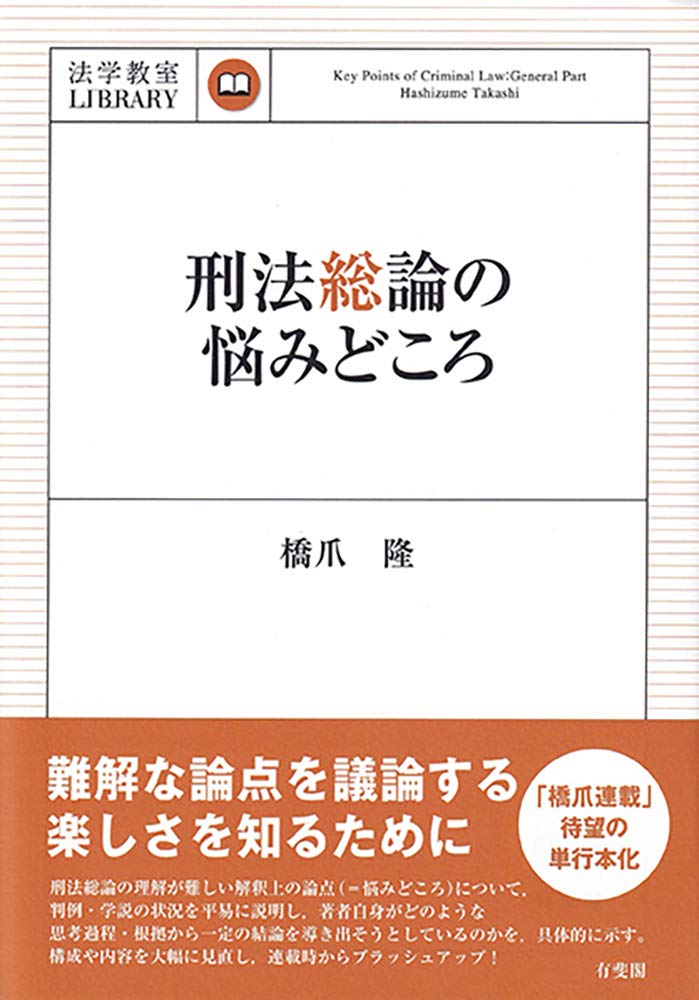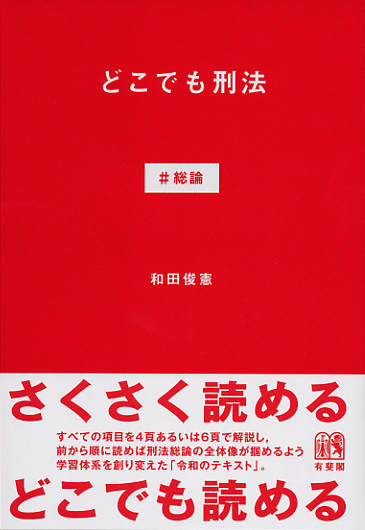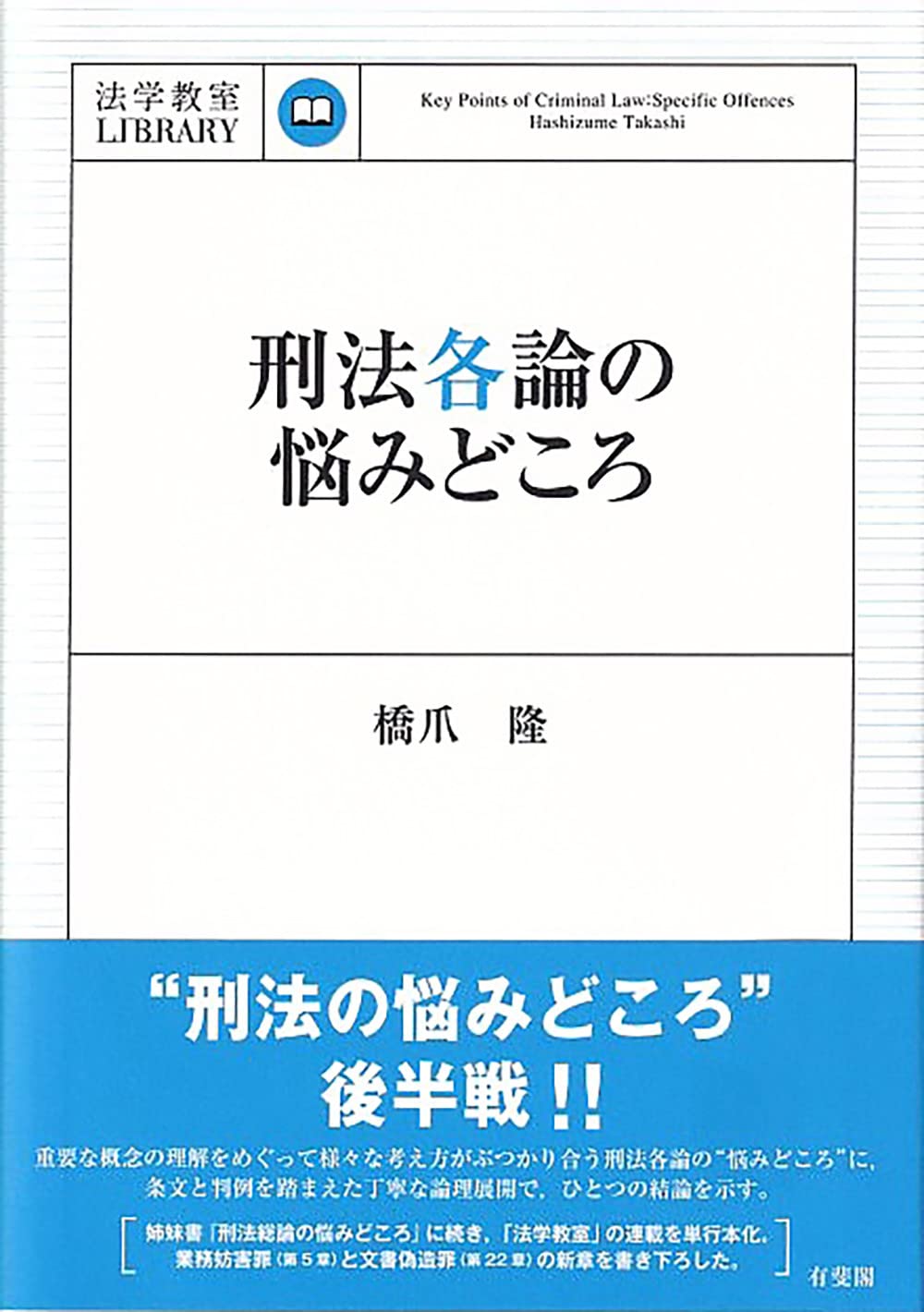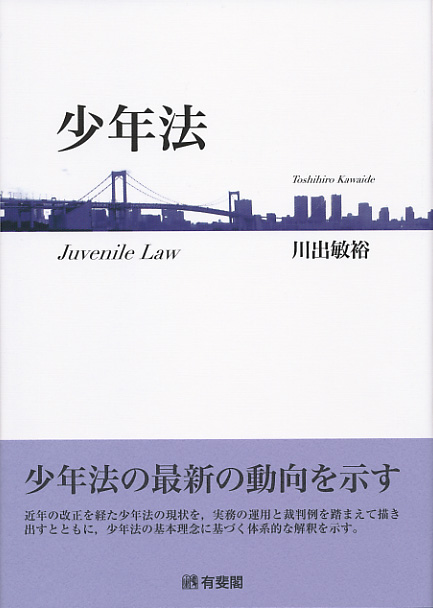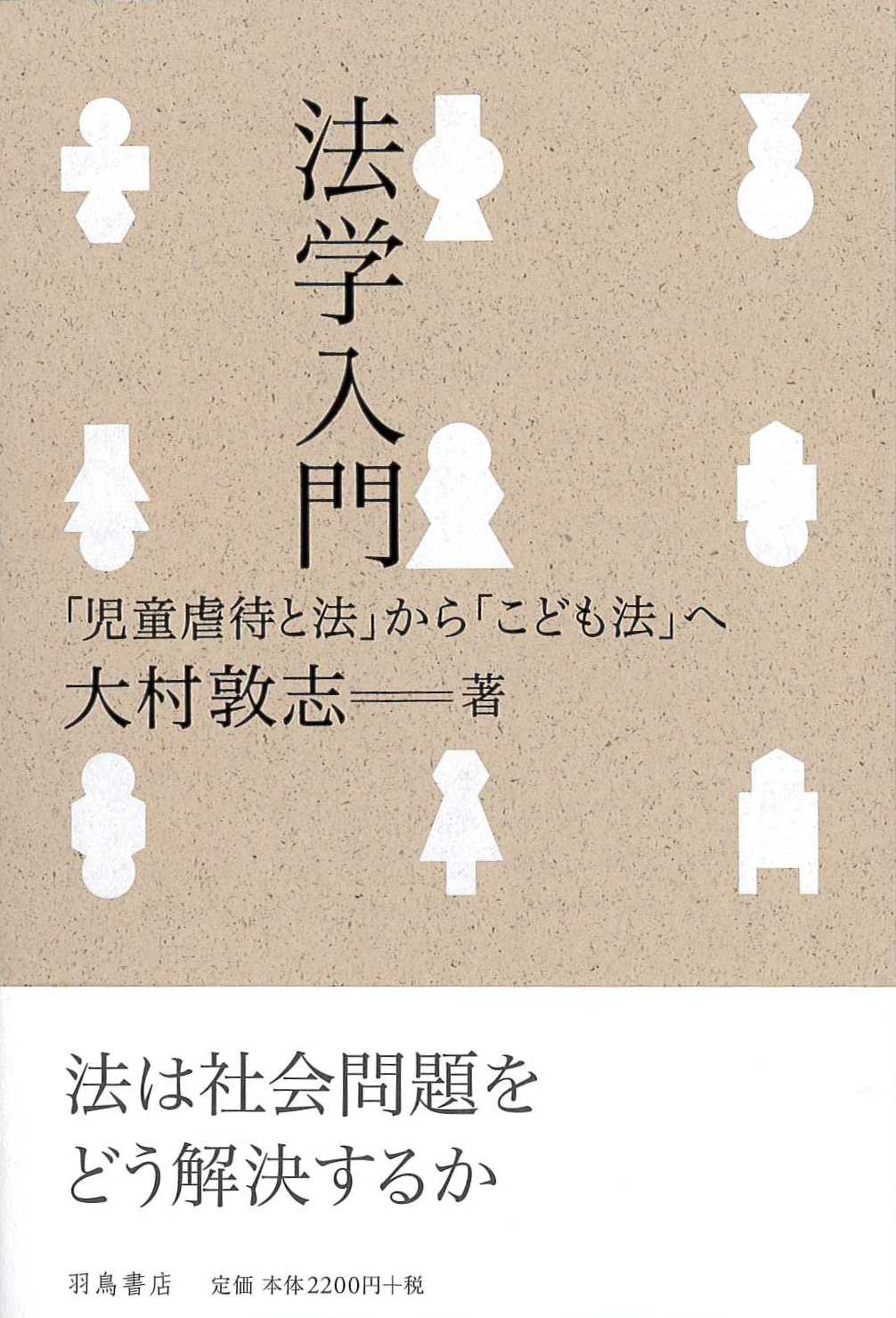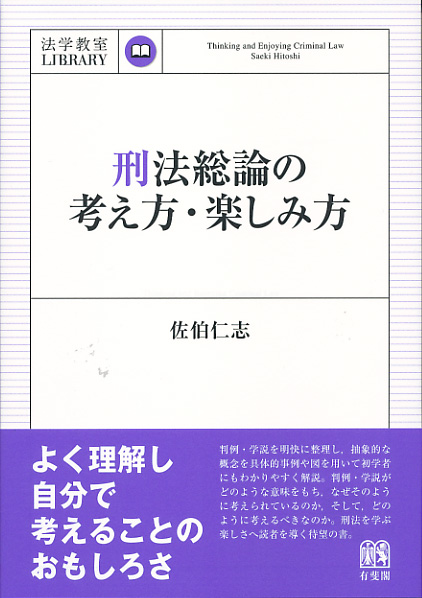
Title
Hougaku Kyoushitsu Library Keihōsōron no Kangaekata / Tanoshimikata (Thinking about and Enjoying Criminal Law)
Size
458 pages, A5 format, softcover
Language
Japanese
Released
April 30, 2013
ISBN
978-4-641-04289-6
Published by
Yuhikaku
Book Info
See Book Availability at Library
Japanese Page
This book is based on a series that ran in the magazine Hougaku Kyoushitsu [The Jurisprudence Classroom]. To this original material, I have added subsequent events in judicial precedent and legal theory as well as a number of new themes. This work helps its readers understand the fundamental approach to contemplating criminal law and have them discover how interesting it is to think about it on their own. In criminal law, multiple conflicting theories coexist, and there are many points that are difficult for the beginner to understand. Therefore, I have made every effort to explain to my readers as clearly as possible what meanings judicial precedent and legal theory have, why they are thought about as they are, and how they should be thought about. By conveying to the readers my own sense of enjoyment regarding criminal law, I have attempted to offer them a taste of how interesting criminal law is.
I have written each of the chapters in a different style. There are already many outstanding textbooks and manuals on criminal law, and I wanted to make my own work distinguishable from them.
For example, in the chapter on nonfeasance, I adopt a first-person narrator, confronting my own approach to the subject—asking why I have chosen this particular approach, what criticisms can be ranged against it, what I think about these criticisms, and what the weak points of my approach are and indicating the points that remain poorly understood. I lay out the complete details of my approach because I want to have my readers analyze it together with me.
The chapter Mens Rea (1) deals with the issue of “willful negligence.” This is an area of intense theoretical debate, and there is great controversy over the interpretation of precedents. However, it has become apparent to me that when the theories are applied in practice, no given approach yields any major difference from another; people are not generally aware of this. I have therefore demonstrated that the circumstances in which differences actually emerge are limited, and that the real issue is how we should think in relation to them. I think that, regardless of whether the reader agrees with my arguments, my discussion provides a clear explanation of the debate on willful negligence.
Mens Rea (2) covers the issue of “mistake of fact,” in which a crime of intent can be deemed to have taken place in regard to adverse outcomes in cases where an adverse outcome has been brought about for an object other than the object for which the violation was intended. While I think it valid to deny that this constitutes a crime of intent, the body of precedent is settled in the affirmative, and there seems to be no prospect of change in this regard. Given this state of affairs, in this chapter I have attempted to isolate those conditions that can be thought of as the implicit premises of precedent. By doing so, I have attempted to limit the scope within which precedent can be applied. I would be gratified if my readers remember my argument in the future, when they have become practitioners and are applying precedent themselves.
In contrast, in the chapter on complicity, I have abstracted the finer details and explained the main issues involved from the two perspectives of the causality and the limited nature of complicity. Complicity is the most difficult issue in criminal law and the problem most liable to lead students astray. I thus wanted to elucidate it in as comprehensible a manner as possible.
I will be pleased if this book succeeds in making its readers feel the fascination of Criminal Law.
(Written by SAEKI Hitoshi, Professor, Graduate Schools for Law and Politics / 2017)



 Find a book
Find a book


 eBook
eBook